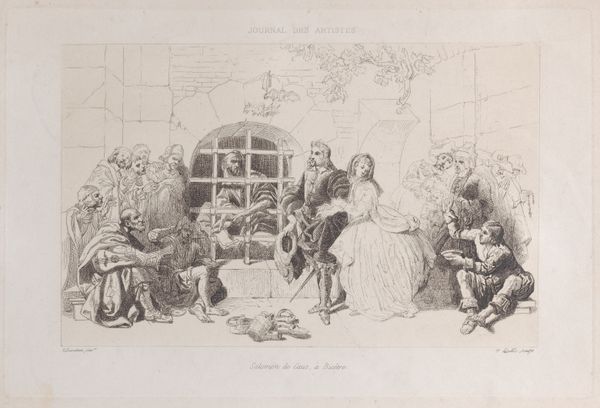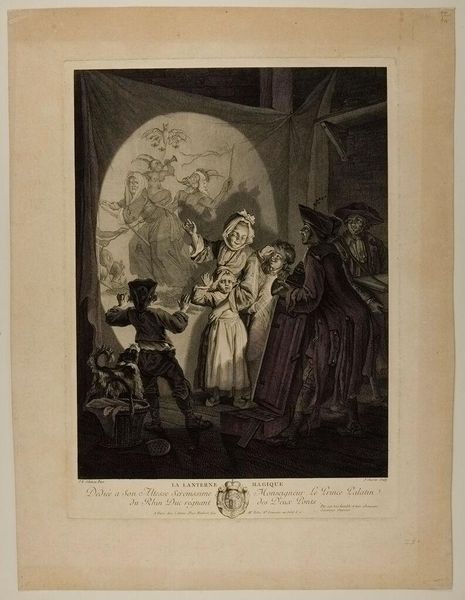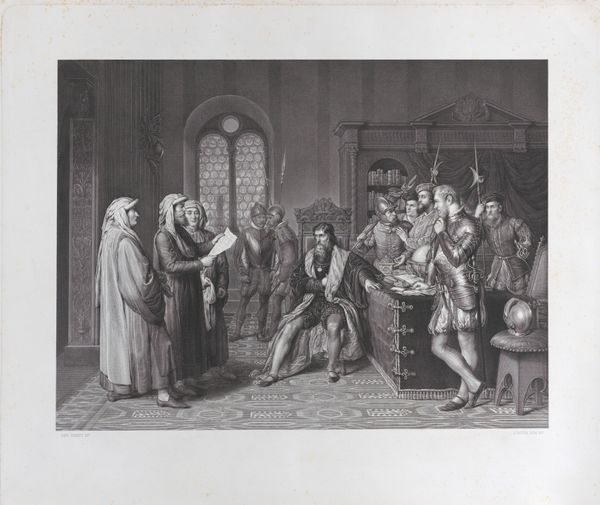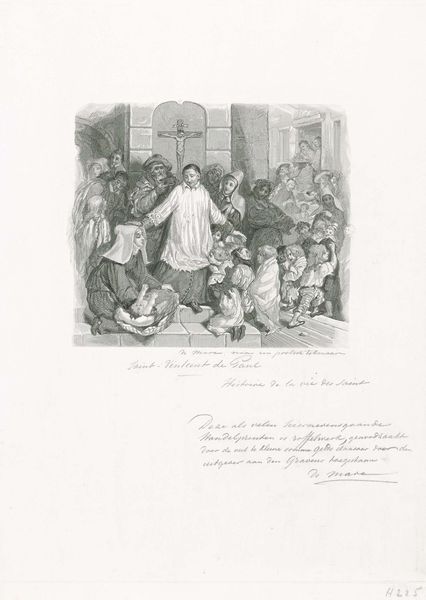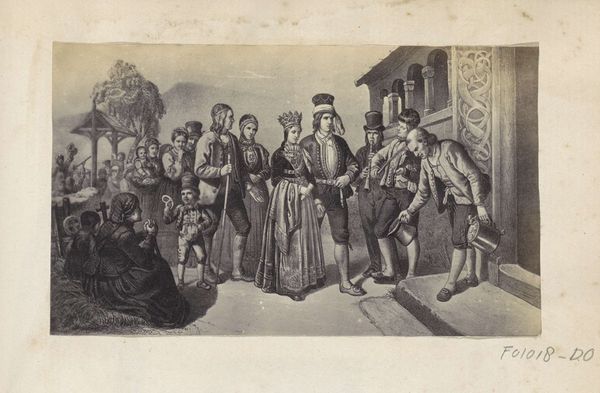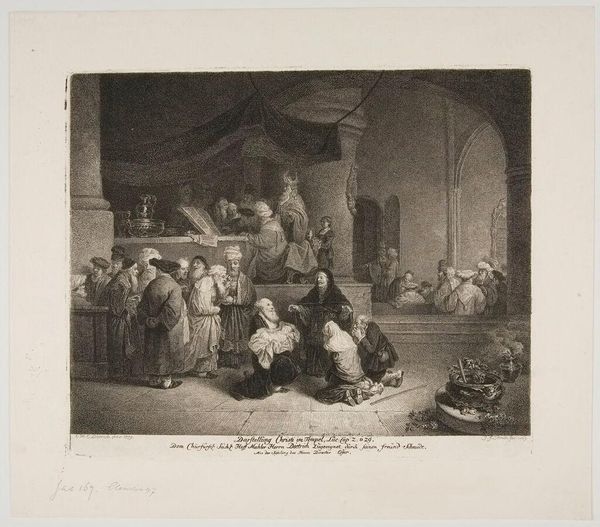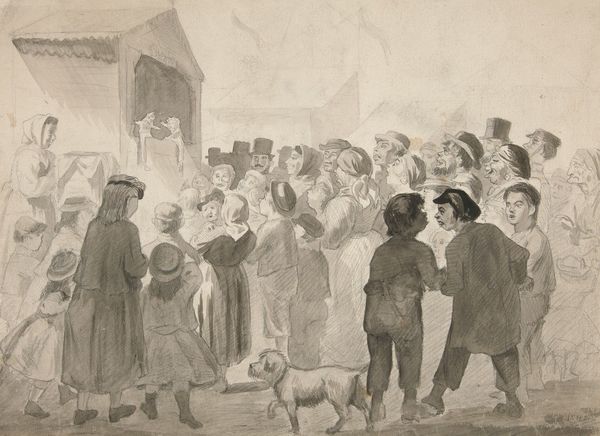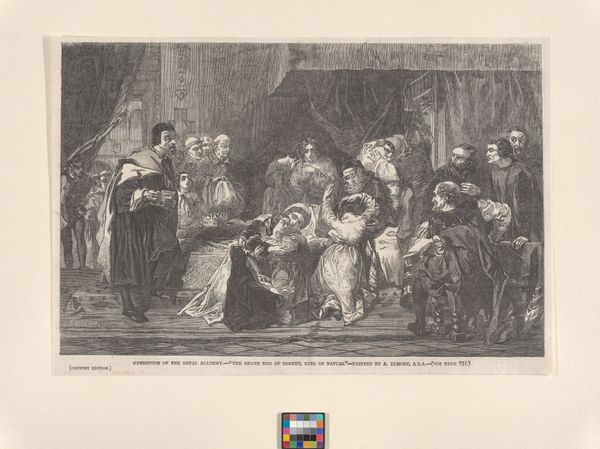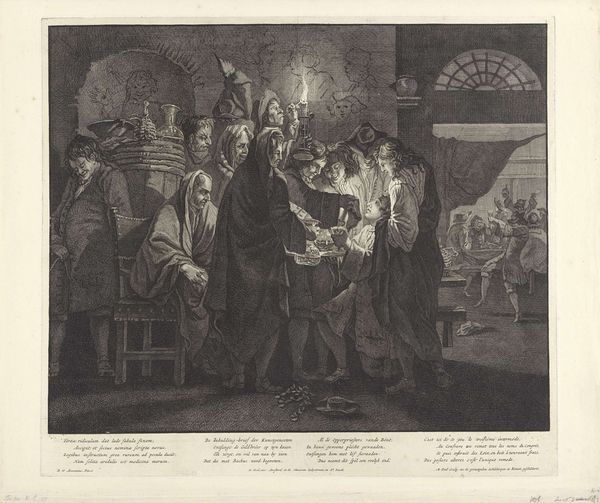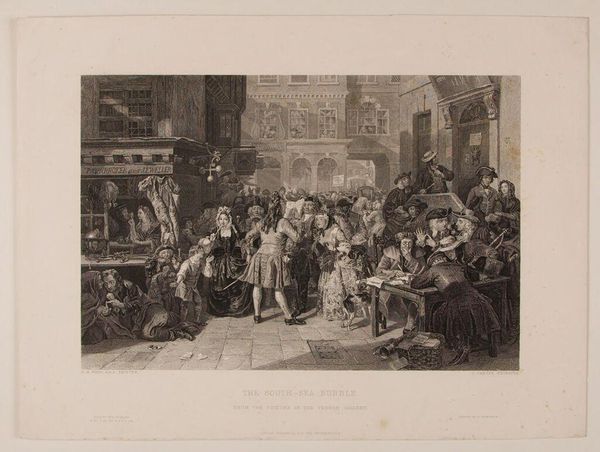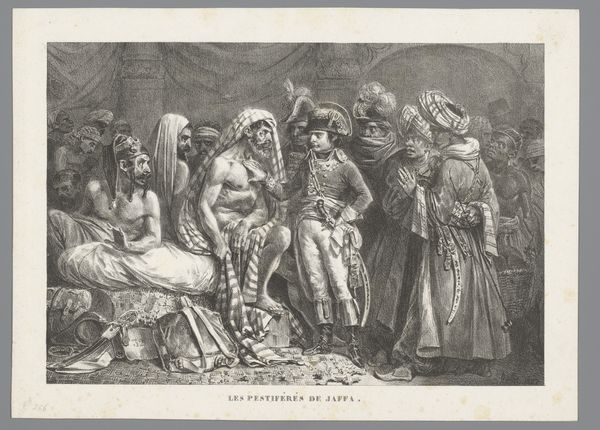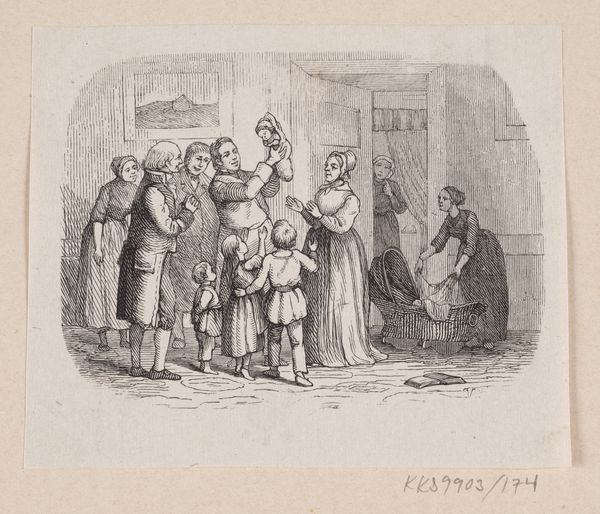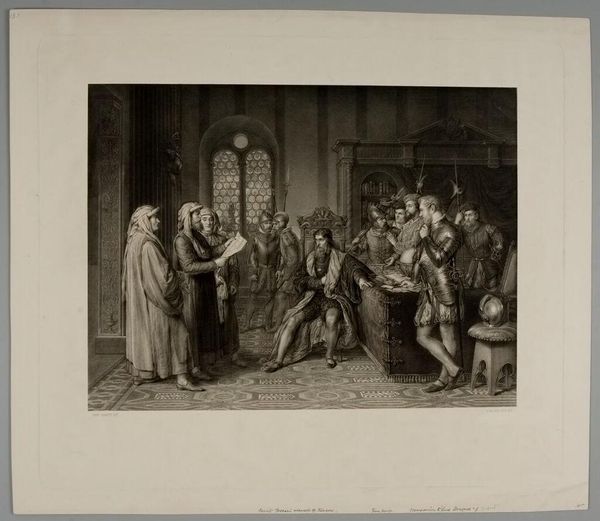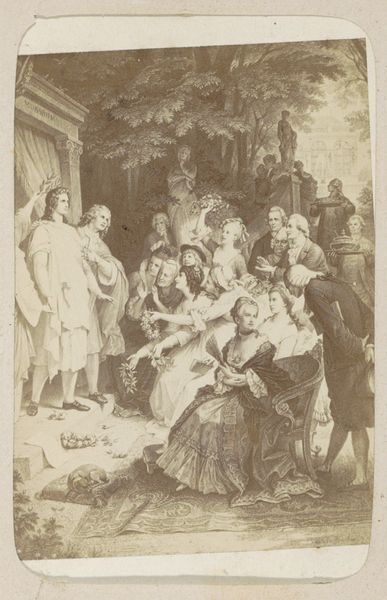
print, engraving
# print
#
figuration
#
genre-painting
#
history-painting
#
engraving
#
realism
Copyright: Public domain
Curator: Ah, here we have "Die Gartenlaube" – "The Garden Arbor" – an engraving dating to 1878, attributed to Toby Edward Rosenthal. A glimpse into a moment, wouldn't you say? Editor: It absolutely screams organized chaos! Like a still from a very old, very energetic film. All those figures crammed into the space – it’s overwhelming, and strangely delightful. Curator: Yes, delightful, perhaps because this type of genre scene offers insight into social dynamics. This print was made as an inexpensive reproduction for mass distribution in the late 19th century. Consider how it was received by audiences consuming similar imagery in the popular press of the time. Editor: And the means of production—an engraving—perfect for those mass-produced prints. It lacks the artistic flair we might associate with a unique painting, but there's a real gritty energy to it, isn't there? Makes you wonder about the engraver and their hands at work. But going back to the image itself…the light is hitting all the faces just so...what’s actually happening here? A wedding interrupted, maybe? Curator: A fitting interpretation! It touches on both social convention and spontaneous interruption. "Die Gartenlaube," or garden arbor, signifies the German family magazine where it first appeared. Note the range of ages and the varied activity, the narrative presented a palatable visual for the home readership invested in similar depictions of domestic life and sentimental moments. Editor: So it was designed for accessibility—literally and thematically. No crazy art school gestures here. You almost expect some of the figures to tumble out of the scene. What’s interesting is its lack of pretense—refreshingly straightforward for the period. A simple human moment caught in ink, multiplied across who knows how many homes. Curator: Precisely. The technique is very of-the-moment. Look at the way realism has been utilized to emphasize common, contemporary themes—family life, ceremony and humor—reflecting prevailing social norms and available modes of art production at the time. Editor: Seeing art like this brings the era so much closer, don't you think? Like time traveling, if time traveling came with slightly blurry ink and a dash of delightful pandemonium. Curator: I couldn't agree more. There’s a certain poetry to seeing those lines made and reproduced on a massive scale for consumption in living rooms across Germany.
Comments
No comments
Be the first to comment and join the conversation on the ultimate creative platform.
